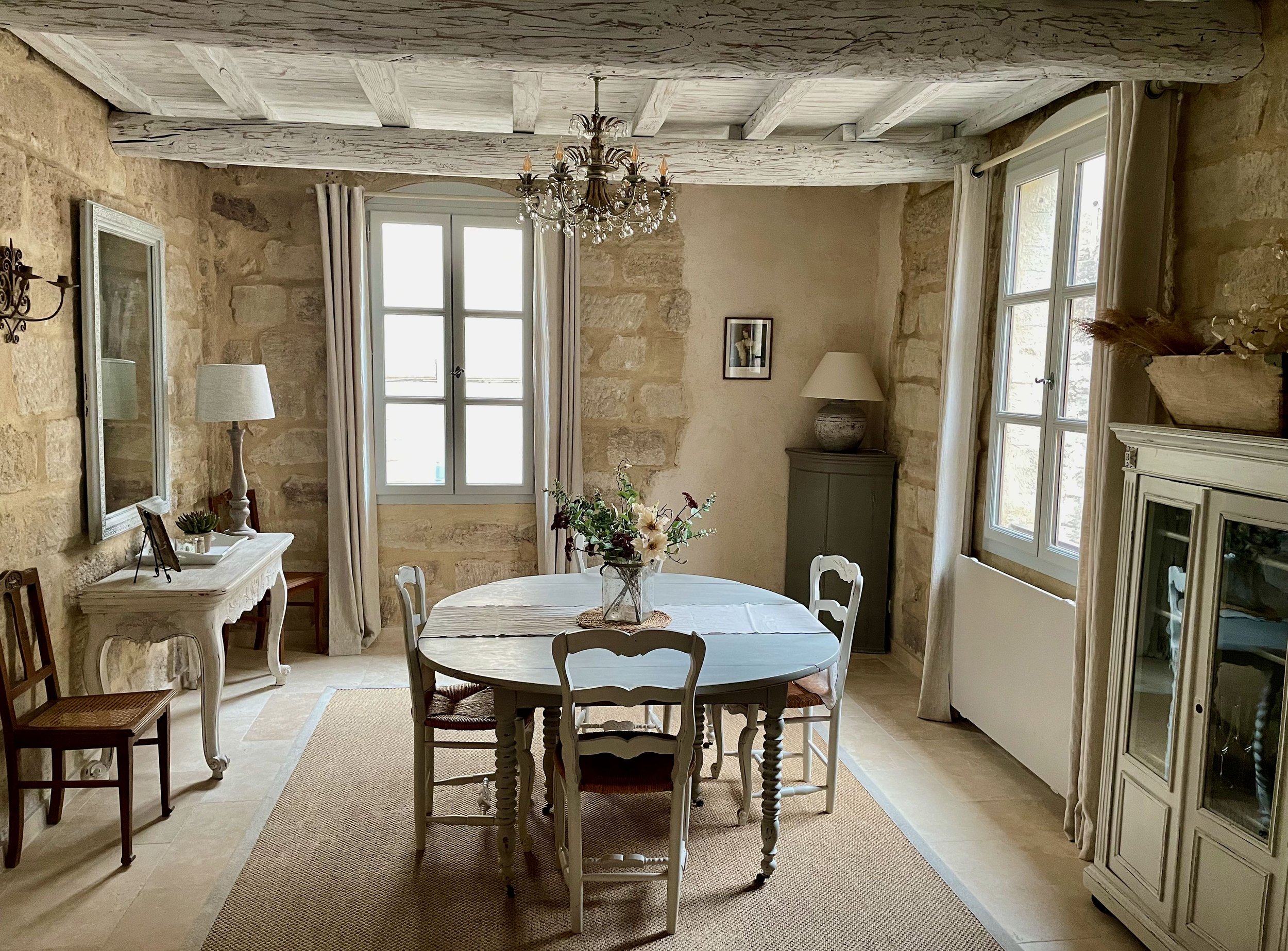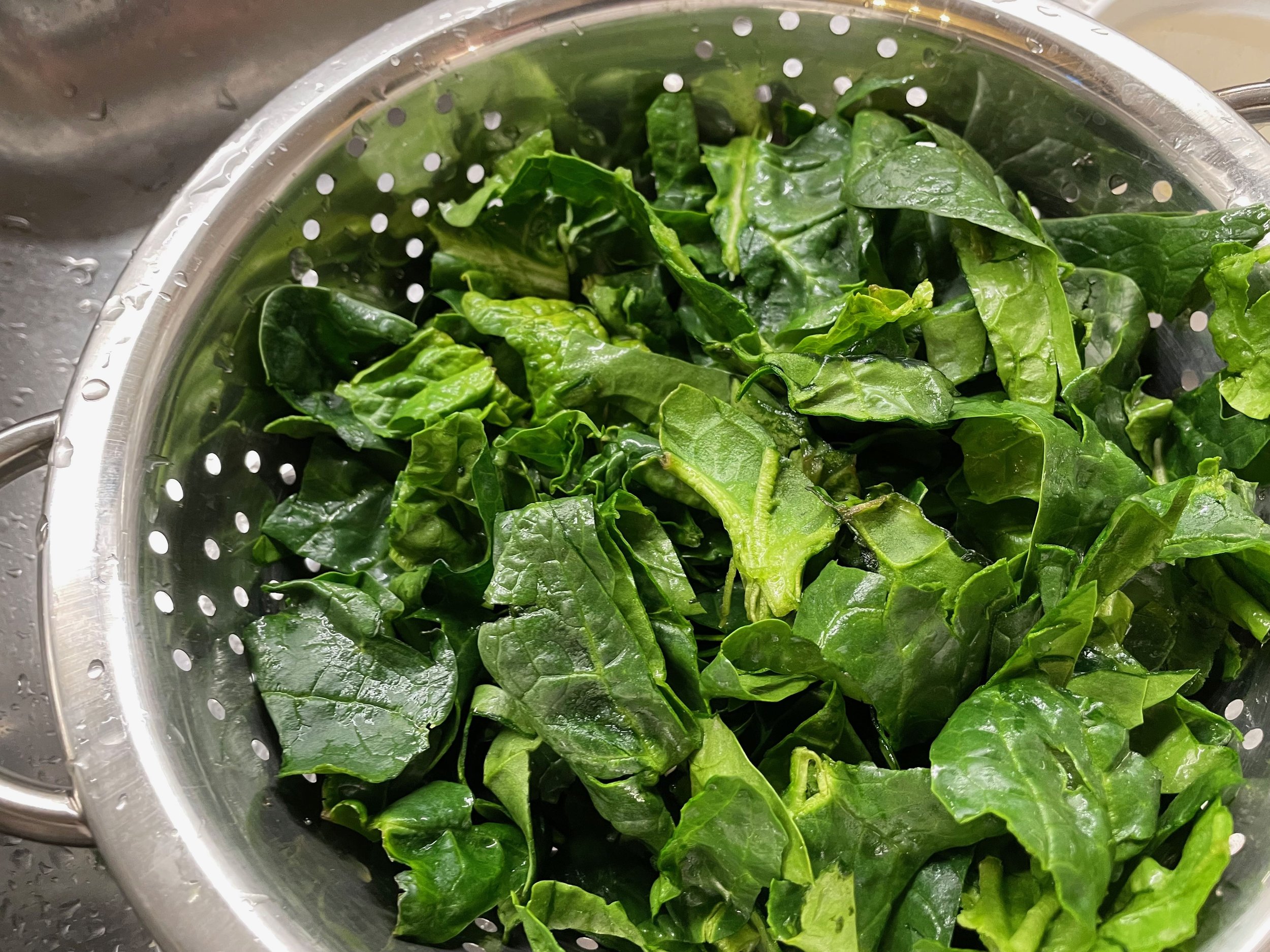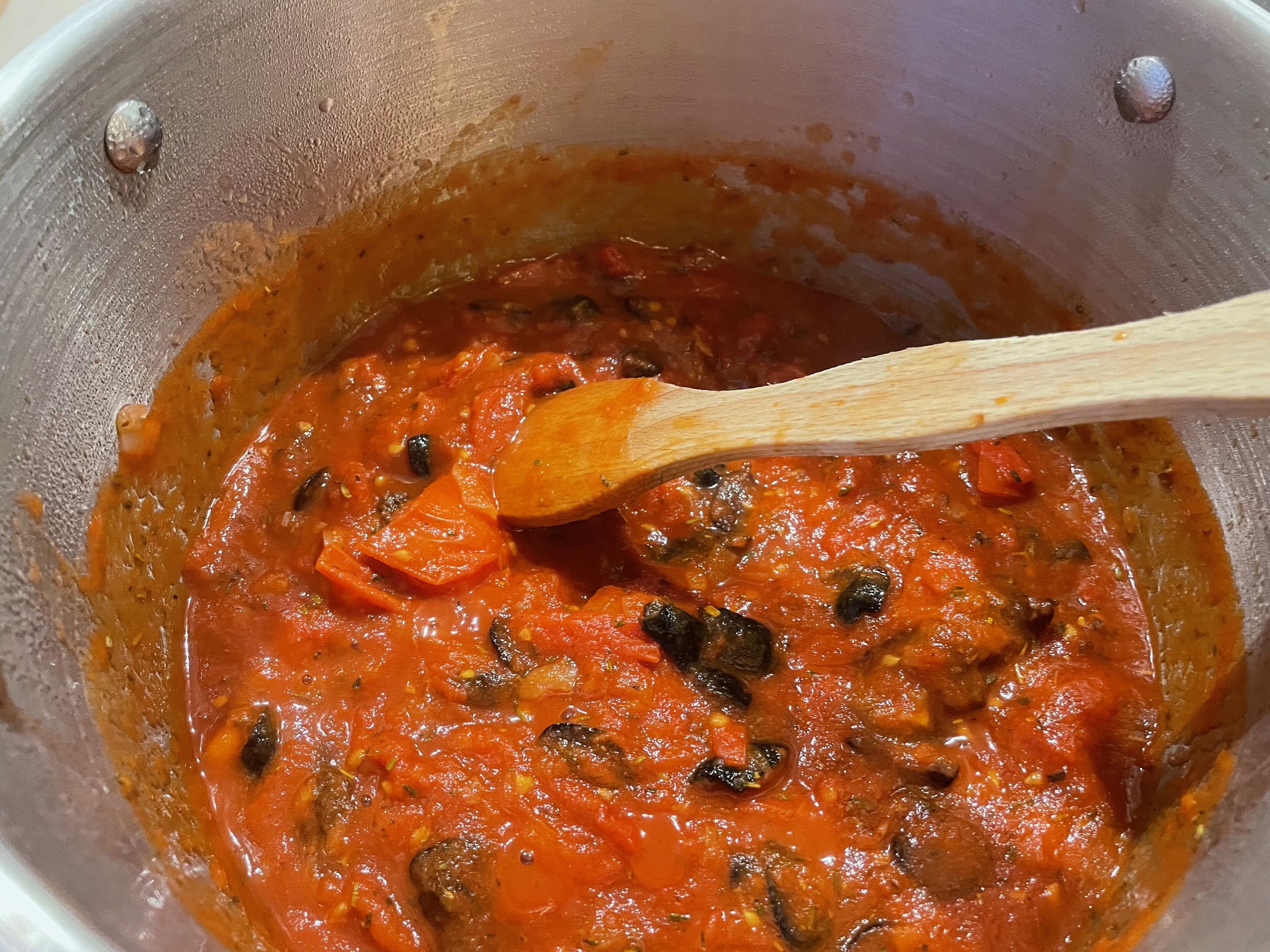Fall has been a very busy time for me, getting over a bout of Covid, out-of-town family and friends visiting, organizing the harvest and harvest lunch, prepping the garden before winter, and ushering in all the things I love about fall. One of those things is exploring new recipes with pumpkin.
You might say I have “pumpkinmania.” I love cooking and baking with pumpkin because it has such a versatile savory to sweet span for recipes. Each year there seems to be more and more innovative ways to use pumpkin in recipes for its luscious fall flavor and smooth texture. In the next couple of weeks, I am going to share with you a series of pumpkin recipes, that I know you will want to try too.
The first one is Pumpkin-Spinach Lasagna Roll-Ups. I consider this elegant recipe worthy for a special occasion dinner. In fact, I served it for my visiting sister-in-law’s birthday celebration. It has a sauce on the bottom of your baking pan, and one on the top, covering your filled roll ups.
I love recipes that take you “out of the box” in your thinking and put a twist on something classic, in this case, classic lasagna. This recipe has several steps, as in lasagna, so make it easy on yourself by making it ahead of time, and even freezing it until you need it. Thaw it out before baking, and pop it in the oven to bake.
This recipe calls for making the roll-ups in a cast iron skillet or oven-safe skillet and baking it immediately. Because I knew I wanted to freeze the roll-ups, I made it in a rectangular baking dish, froze it for later (leaving out the last step of sprinkling grated mozzarella over the top until the day of baking) and then baked it following the recipe directions.
Pumpkin-Spinach Lasagna Roll-Ups
By Inés Anguiano Featured in Bon Appétit, September 2024
Noodles and Filling:
1 lb. dried lasagna noodles
1-1/2 tsp. Diamond Crystal or 1 tsp. Morton kosher salt
2 large eggs
8 oz. fresh ricotta (about 1 cup)
1 oz. Parmesan, finely grated (about 1/2 cup)
1 cup finely chopped baby spinach (about 2.5 ounces)
1 tsp. freshly ground pepper
1 tsp. garlic powder
Sauce and Assembly:
1 Tbsp. plus 1-1/2 tsp. extra virgin olive oil
2 medium shallots, finely chopped
4 garlic cloves, finely chopped
2 Tbsp. finely chopped thyme, plus leaves for serving
1-15 oz. can unsweetened pumpkin purée (such as Libby’s)
1 cup heavy cream
1 Tbsp. plus 2 tsp. Diamond Crystal or 1 Tbsp. Morton kosher salt
1 tsp. dried oregano
1/2 tsp. freshly ground nutmeg
1 tsp. freshly ground pepper, plus more
2 oz. Parmesan, finely grated (about 1 cup)
4 oz. low-moisture mozzarella coarsely grated (about 1 cup)
Noodles and Filling Directions:
Place a rack in the middle of the oven; preheat to 375 F. degrees. Cook lasagna noodles in a large pot of boiling generously salted water, stirring often to prevent sticking, until al dente, about 5 minutes. Drain and rinse under cold running water, separating noodles. Lay out in a single layer on a baking sheet, patting dry as needed; set aside.
Mix eggs. ricotta, Parmesan, spinach, pepper, garlic powder, and remaining 1-1/2 tsp Diamond Crystal or 1 tsp. Morton kosher salt in a medium bowl until smooth and no visible streaks of egg remain; set aside.
Sauce and Assembly Directions:
Heat oil in a large cast-iron or oven proof stainless-steel skillet on medium. Add shallots and cook, stirring often, until softened and translucent, about 5 minutes. Add garlic and 2 Tbsp. thyme and cook, stirring often, until fragrant, about 1 minute. Add pumpkin purée and cook, stirring occasionally, until darkened to a deep orange, about 5 minutes. Add cream, salt, oregano, nutmeg, 1 tsp. pepper, and 1 cup water and stir until smooth. Add Parmesan and cook, stirring occasionally, until cheese is melted and sauce has thickened slightly, about 2 minutes. Remove from heat and transfer 1-1/2 cups to a small bowl; set aside.
Leave remaining sauce in skillet, if using the cast-iron bake immediately method. If using the bake later method, pour the remaining sauce into the bottom of your baking dish.
Working one at a time, spoon 1 heaping Tbsp. reserved ricotta mixture onto each noodle and spread evenly from end to end. Tightly roll up noodles. Arrange lasagna rolls, seam side down, in your cast-iron pan or baking dish. For the cast-iron method, start from the center and working in a circle toward edges to create a spiral. For the baking dish method, arramge roll-ups in neat rows.
Top pan or dish with reserved sauce; scatter mozzarella over. Bake until cheese is deep golden brown, 33-38 minutes, and roll-ups are heated thoroughly. Let lasagna cool slightly. Top with thyme leaves and season with more pepper to serve. Recipe makes 4-6 servings (I think it makes 8 servings). Enjoy!
Old World Window Mirror Perfect for a Covered Outdoor Patio
“MON PETIT CHOU” CORNER
Old World Window Mirror for sale, $125.00. The frame is sandblasted. Adds a dash of interest for a covered outdoor area. Could be stained or painted to suit your style and décor. If interested, please email or call Bonnie at (760) 402-7600.
Bon Appétit et Bon Weekend…Bonnie

























